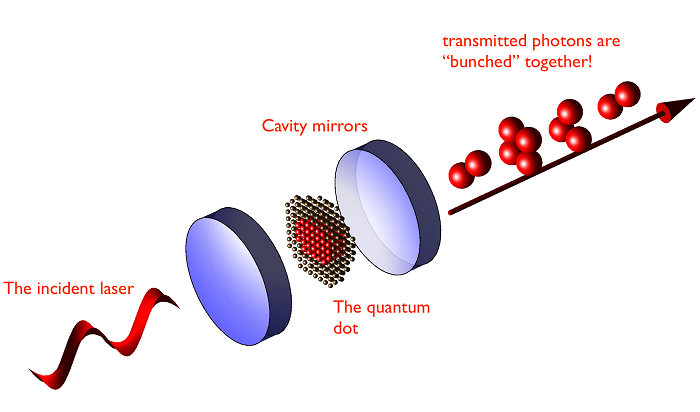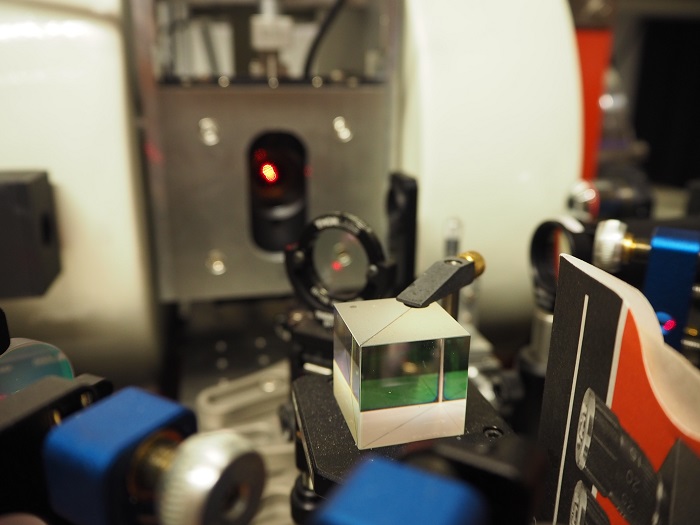30-08-2016
Physicists have manipulated light with large artificial atoms, so-called quantum dots. Before, this has only been done so well with actual atoms. It is an important step towards light-based quantum technology. Publication on August 30th in Nature Communications.
During a presentation, when you point a laser pointer at the screen, an immense amount of light particles race through the air at a billion kilometers per hour. They don’t travel in a continuous flow, but in packages containing varying numbers of particles. Sometimes as much as four so-called photons pass by, and other times none at all. You won’t notice this during your presentation, but for light-based quantum technology it is crucial that scientists have control over the number of photons per package.
Quantum dots
In theory you can manipulate photons with real individual atoms, but because of their small size it is extremely hard to work with them. Now, Leiden physicists have discovered that the same principle goes for large artificial atoms—so-called quantum dots—that are much easier to handle. In fact, they managed to filter light beams with one photon per package out of a laser. ‘Another big advantage of quantum dots is that the system already works within nanoseconds,’ says first author Henk Snijders. ‘With atomic systems you need microseconds, so a thousand times longer. This way, we can manipulate photons much faster.’

Between two mirrors, the quantum dot filters the light beams with just one photon per package out of the laser, so that only packages with multiple photons remain.
Quantum cryptography
The ultimate goal for the research group led by Prof. Dirk Bouwmeester is to entangle many photons using quantum dots. This is essential for example in techniques like quantum cryptography. Snijders: ‘This research shows that we are already able to manipulate individual photons with our system. And the beauty is that in principle we don’t need large experimental setups. We can just integrate our quantum dots in small microchips.’
Publication
Purification of a single photon nonlinearity, H. Snijders, J. A. Frey, J. Norman, M. P. Bakker, A. Gossard, J. E. Bowers, M. P. van Exter, D. Bouwmeester and W. Löffler, Nature Communications













